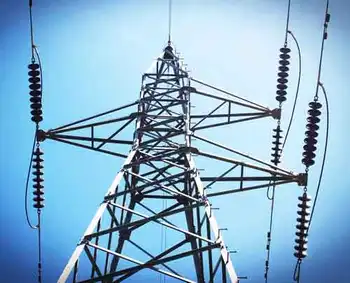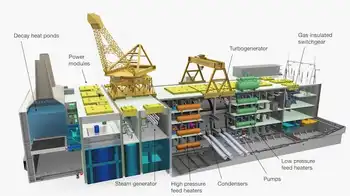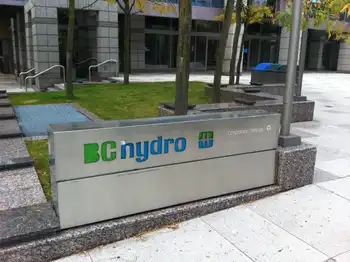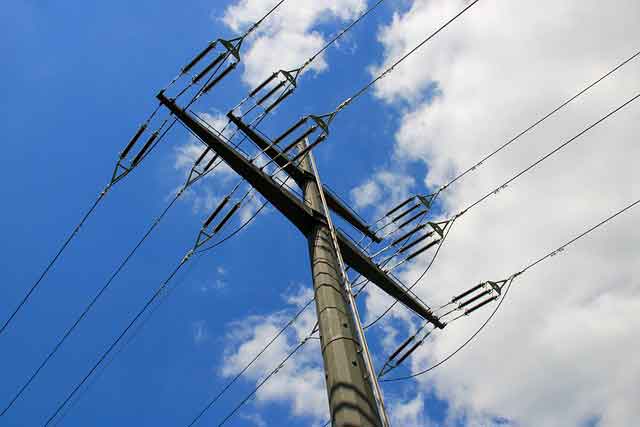No magic bullet - the pros and cons of green cars
The decision is not easy because itÂ’s not yet clear what the technology of the future will be. Fuel cells, diesel, hybrid technology, electric vehicles and clean diesels are all fighting for the same market.
Fuel cell vehicles use hydrogen as fuel to create electricity and emit only water. Fuel cells are about 80 percent efficient, meaning that of the fuel put in, 80 percent is made into electricity, according to HowStuffWorks.com. Internal combustion engines typically achieve 25 to 30 percent efficiency.
Fuel cell vehicles are often considered the holy grail of green motoring, but making them affordable is a challenge that no manufacturer has achieved.
All major automakers have proudly displayed fuel cell concept cars, some have even built working prototypes, but so far none are available for purchase.
The only fuel cell vehicle available to the public at all is the Honda FCX Clarity. The company has already leased a number of them in Los Angeles with plans to eventually deliver about 200, but the $600 per month lease is heavily subsidized.
The Clarity has a 270-mile range per tank of hydrogen and returns the equivalent of 68 mpg, according to HondaÂ’s Web site.
In addition to the high price, there are few gas stations that offer hydrogen. Customers are also deterred by images of the hydrogen-filled German zeppelin Hindenburg exploding while mooring in New Jersey, even though hydrogen is no more dangerous than propane or gasoline.
While diesels have been slow to catch on in the U.S. outside of the full-size truck market, in Europe they represent over 60 percent of new cars sold.
Small European-market diesel cars offer mileage that tops hybrids like the Prius. FordÂ’s Fiesta, a compact hatchback thatÂ’s smaller than a Ford Focus, offers 62.8 mpg, according to the European Union. Even better is the similarly-sized Volkswagen Polo Bluemotion, which is a regular Polo optimized for efficiency. With a 3-cylinder 1.2 liter engine it returns 71.3 mpg.
Diesels also produce less carbon dioxide than comparable gasoline engines. However, they emit more nitrous oxide and hydrocarbons.
Although diesel prices fluctuate, it is generally more expensive than gasoline. In Europe, diesel is taxed less than gasoline, making it cheaper by comparison.
Stricter U.S. emissions standards along with the American publicÂ’s lack of demand has deterred most car makers from producing diesels for the U.S.
That has begun to change as new technology, including particulate filters and urea injection, makes diesels cleaner. Audi, Volkswagen, Mercedes and BMW all offer diesels. Urea injection reduces nitrous oxide emissions by up to 99 percent.
New diesels require low sulfur diesel fuel. Although it is widely available, a gallon of low sulfur diesel requires 25 percent more crude oil than a gallon of gasoline. Diesels can also be run on bio-diesel, which is renewable and less polluting but also produces less power.
Hybrid vehicles, which use an electric motor in conjunction with a gasoline engine, are the most prevalent type of alternative car. When the car decelerates, the brakes convert the inertia of the car to electricity to recharge the battery. Some hybrids, like ToyotaÂ’s Prius, can operate at low speeds using only the electric motor, while others, like HondaÂ’s Civic Hybrid, require the engine to be running at all times.
Hybrids have a huge advantage — they already work with the existing infrastructure. They can be refueled at any gas station and have the same distance range as conventional cars, which gives the driver the freedom and flexibility to travel whenever, wherever.
Hybrids are not perfect, however. Top Gear, a leading U.K. automotive magazine published by the BBC, recently called the Prius, “a sham act if there ever was one.” The Prius, like most hybrids on sale, uses nickel-metal hydride batteries.
Mining of nickel can be environmentally destructive. Toyota buys nickel for Prius batteries from a mine in Sudbury, Ontario, Canada. The mine has created such a dead zone around it, that NASA now uses the area to test lunar rovers.
“The acid rain around Sudbury has destroyed all the plants and the soil slid off the hillside,” David Martin, a Canadian Greenpeace coordinator, told the British newspaper Mail.
Future hybrids, like ChevroletÂ’s highly promoted Volt, will feature plug-in technology. The car can be charged in six to seven hours at a regular electrical outlet, allowing it to drive without using the gasoline engine until the charge is depleted and the engine kicks in. The car then operates like a normal hybrid. The Volt goes on sale in 2010.
Using ethanol as a fuel has been in the limelight recently. It has the advantage of being used in conventional internal combustion engines. Missouri, Minnesota, and Hawaii all require a small - up to 10 percent - amount of ethanol to be blended into all gasoline.
There are a number of cars available in almost every market sector from both GM and Ford that can run on E85, a mix of 85 percent ethanol and 15 percent gasoline. However, E85 is not widely available in the U.S. As of 2008 there were about 1,700 gas stations in the country offering E85, but nearly all of them were in the Corn Belt, led by Minnesota and Illinois.
Even where E85 is available, itÂ’s hardly an economic or environmental silver bullet. In the U.S. ethanol is made mostly from corn, which has created jobs and driven the price of corn to record highs. While creating jobs and reducing dependence on foreign oil are admirable, creating fuel from a crop that is used for food, either directly for human consumption or as cattle feed, is not sustainable on a global scale. The earth has a limited amount of fertile land and thereÂ’s not enough to provide for both fuel and food. Making the problem worse is the fact that much of the farming is done with diesel farm equipment that causes pollution.
The other drawback of ethanol is that it contains less energy than gasoline, which results in a decrease in mileage because more fuel needs to be burned to get the same amount of power.
Ethanol can also be made from sugar cane, petroleum, or waste products from other crops.
As a fuel, however, it’s difficult to fault. Many racecars use ethanol. Lotus, a maker of British sports cars, even produced an E85-powered version of its Exige sports car, calling it “the most powerful road version of the Lotus Exige ever.” The 265 hp supercharged car was built to show what was capable with ethanol but was never put into production.
Electric cars have the advantage of zero tailpipe emissions, but this is somewhat misleading. Electric cars still create emissions, the only difference is that the emissions come from a power plant instead of the car. Emissions from electric cars are impossible to define, because it depends on how the electricity used to charge the car is produced. In the U.S., 55 percent of electricity still comes from non-renewable — and polluting — coal-burning power plants. In California, which has a variety of power plants, electric vehicles would be significantly cleaner than their gasoline counterparts.
The biggest problem with electric vehicles is their lack of distance range, coupled with long charging time, this makes electric car ownership less appealing. Although many electric vehicles today resemble glorified golf carts, the trend is starting to change.
The electric Tesla Roadster, a two-seat sports car made by Tesla Motors, is based on a Lotus chassis, making it both high performing and environmentally friendly. With a charging time of about four hours using a special electrical outlet, the Roadster offers a range of 240 miles, according to Tesla, although hard driving can significantly lower the range.
Celebrities are cuing up. Gov. Arnold Schwarzenegger and George Clooney, among others, have placed orders.
There are more practical options as well. MINI offered a lease program on an electric version of its popular MINI Cooper to customers living in New York, New Jersey, and California. The electric version sacrifices the back seats of the regular car to make space for the battery packs, but offers a range of 150 miles and a top speed of 95 mph. MINI plans for the car to go on sale between 2010 and 2015.
Related News

Planning for Toronto?s Growing Electricity Needs
TORONTO - As Toronto's population and economy continue to expand, the demand for electricity in the city is also increasing rapidly. In response, the Ontario government, in partnership with the City of Toronto and various stakeholders, has launched an initiative to enhance the electricity infrastructure to meet future needs.
The Ontario Ministry of Energy and the City of Toronto are focusing on a multi-faceted approach that includes upgrades to existing power systems and the integration of renewable energy sources. This initiative is critical as Toronto looks towards a sustainable future, with projections indicating significant growth in both residential and commercial…




